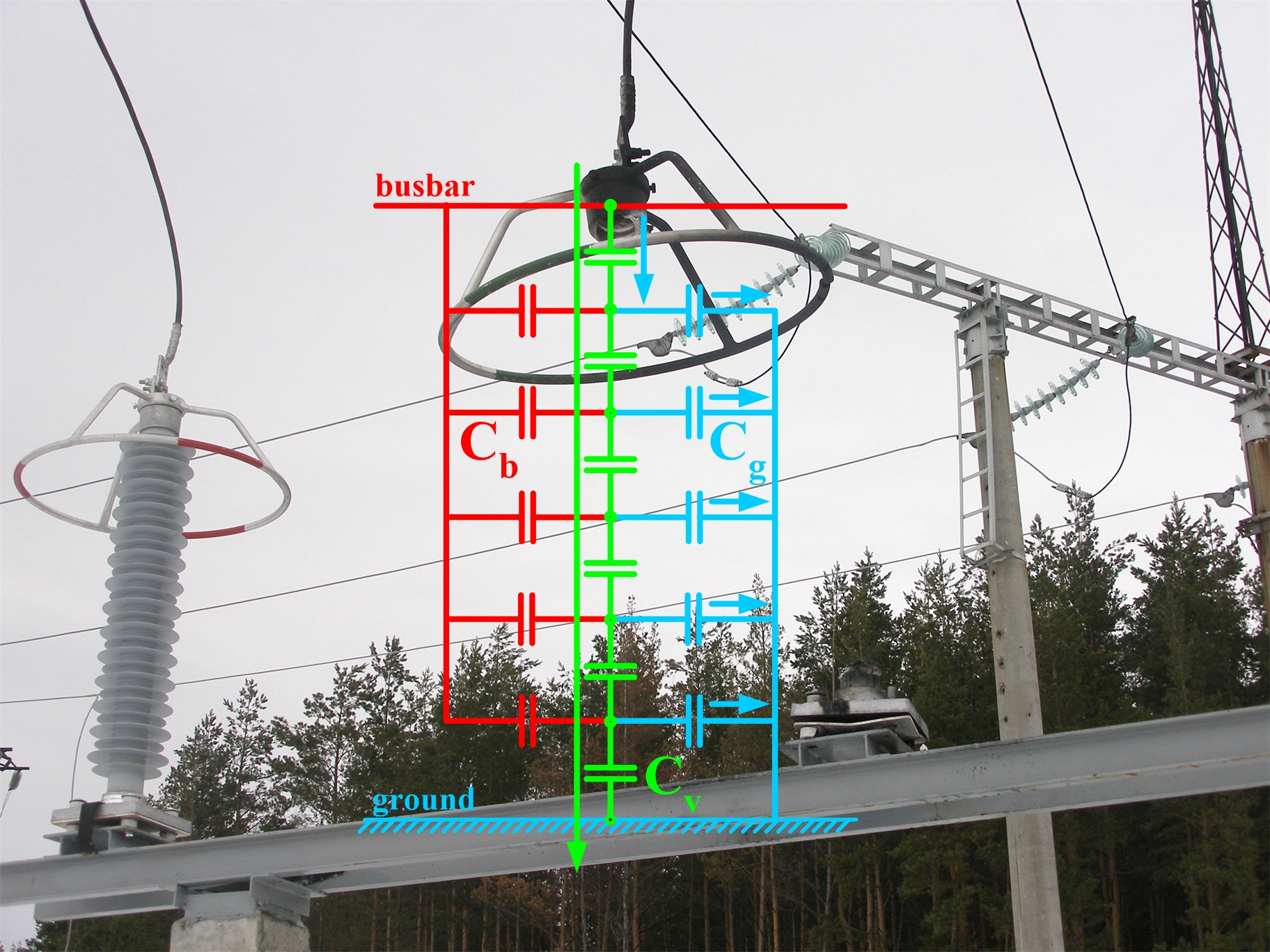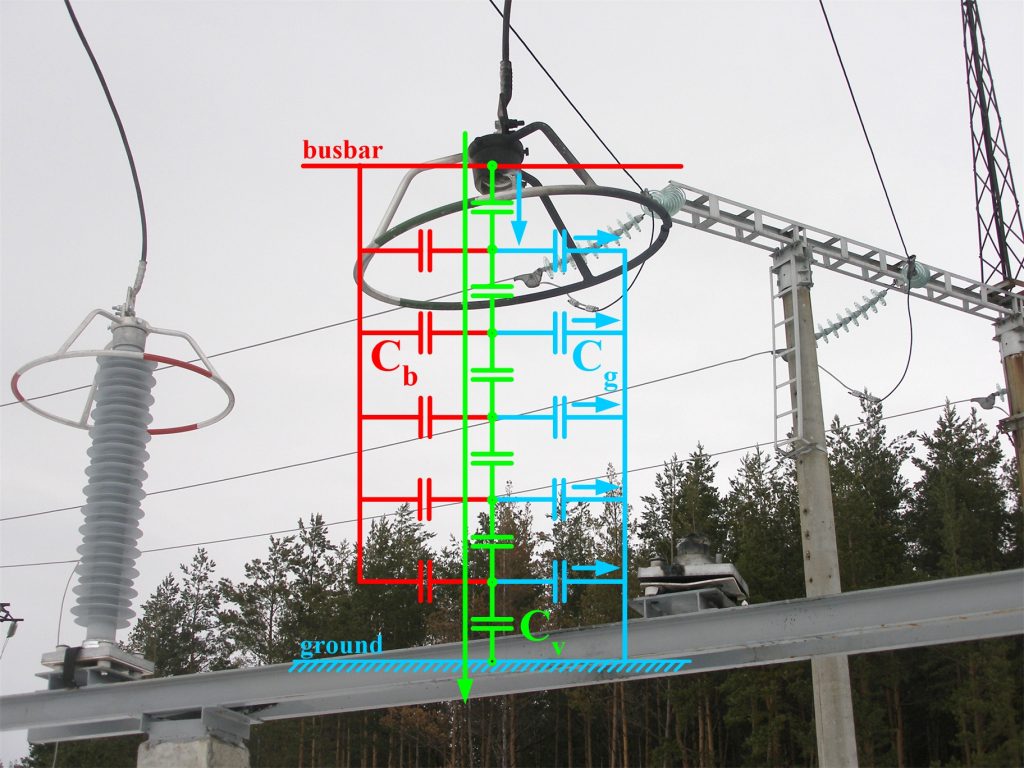
Do we need a grading ring for 110 kV surge arrester?
The photo shows the grading ring (“screen”) that remained from the damaged 110 kV metal-oxide surge arrester (SA or MOA). I’m not going to discuss now why and where the damaged SA went (flew away or just fell down on some equipment and people’s heads). Now I would like to discuss the SA screen only.
Let me remind you that the screen is designed to equalize the distribution of AC 50 Hz voltage along the SA height. The fact is that in normal mode, the voltage distribution along the SA is determined by:
1️⃣ Longitudinal capacitance of SA elements (varistors) = Cv.
2️⃣ The capacitance of the SA side surface to the ground = Cg.
3️⃣ The capacitance of the SA side surface to the high voltage busbar = Cb.

The ground surface is massive in comparison with the busbar, Cg>Cb. As a result, different currents pass through different SA elements, and the greatest currents are characteristic of the elements in the SA upper part. Increased capacitive currents in the SA upper part contribute to an increased voltage drop on the upper varistors, as well as their increased heating and aging.
Three options can be proposed:
1️⃣ Equip the SA upper flange with a screen. Such a screen increases Cb, bringing it closer to Cg. As a result, the voltage distribution is equalizing.
2️⃣ Use varistors of increased longitudinal capacitance Cv. This reduces the effects associated with the capacitances Cg and Cv.
3️⃣ Be careful when installing the SA near grounded structures (next to the wall or other equipment), because this increases Cg and gives the uneven SA voltage distribution.
Points 2 and 3 will be discussed in other posts. Now I would like to focus only on point 1 – screens may be installed to equalize the SA voltage distribution. Let’s consider only the SA of the «on-ground» design, because the suspended SA is a separate task for equalizing the voltage distribution.
The higher the SA rated voltage class, the greater the capacitances Cg and Cb affect the SA voltage distribution. Calculations and operational experience say that:
– For classes U<35 kV, the SA screen is definitely not needed.
– For classes U>150 kV, the SA screen is definitely needed.
However, what about the 110 kV class that is between 35 and 150 kV? In general, we have two issues about SA 110 kV:
1️⃣ Do we need a screen for SA 110 kV? I have met SA 110 kV both with and without screen, and I cannot say that the absence of a screen on SA 110 kV was some reason for their damage due to wrong voltage distribution.
2️⃣ Suppose we need a screen for SA 110 kV, then what would be the best screen design? The SA designs from manufacturers are more or less the same, but I have met SA 110 kV with many different screen’s designs (diameter, height etc).
Perhaps it would be nice to do research on issues 1 and 2, or maybe it was done already by someone.
PS
The influence of the cable termination on the SA voltage distribution will be considered separately in the “Cable lines” blog
